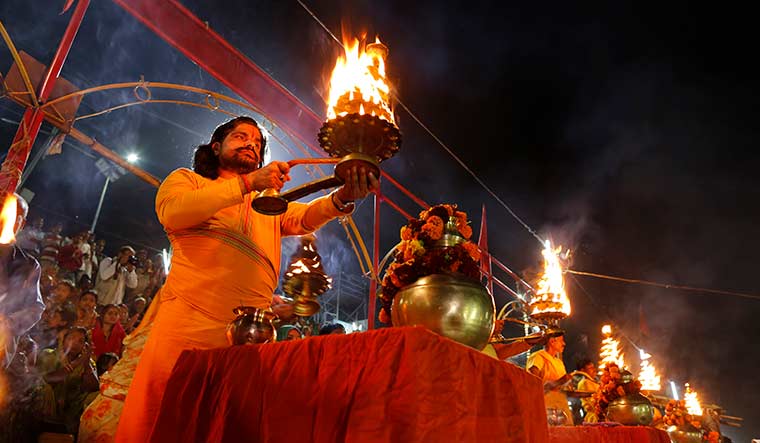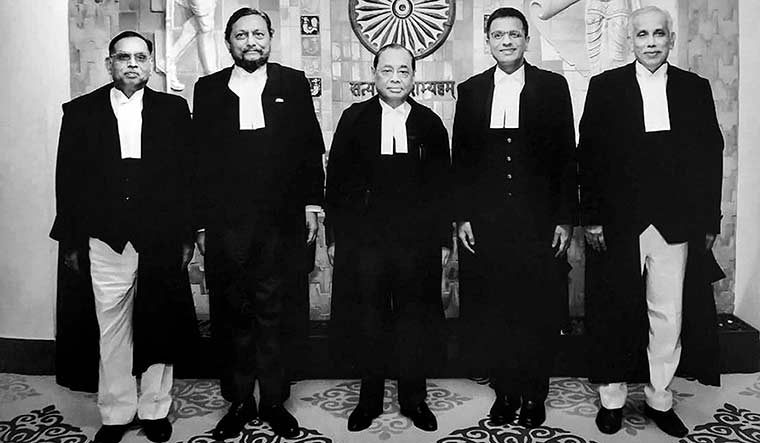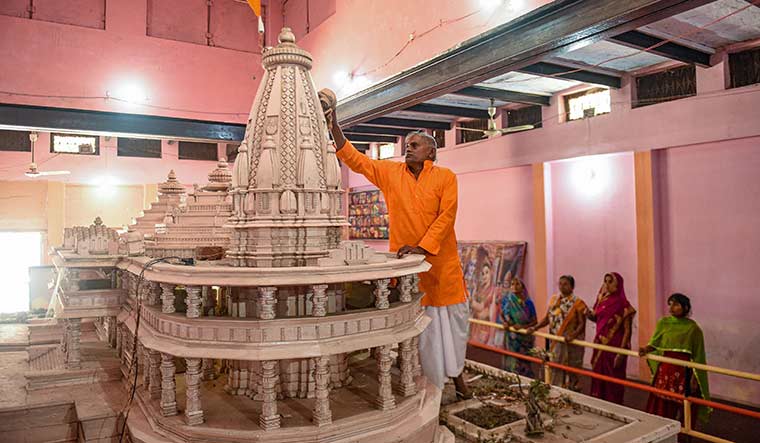While God waits for his temple to be built of love, men bring stones.
—Fireflies, Rabindranath Tagore
The poet always wanted temples to be built of love, and now, 91 years after those words were penned, the Supreme Court of India wants stones of love to be used to build a temple and a mosque in Ayodhya.
Drawing on the extraordinary powers given to it by the Constitution 69 years ago, a Constitution bench headed by Chief Justice Ranjan Gogoi delivered a judgment, which was noted both for its unanimity and imagination. The judgment, which showed triple leaps of faith, law and logic, puts an end to a long-drawn dispute which has sundered the nation’s peace and equilibrium along religious and political lines for more than four centuries.
The leap of faith has delighted Hindu groups, which, over the years, have firmly articulated their widespread belief that Ram was born in the exact spot where a mosque came up in the 16th century, after demolishing a temple. The Muslims also granted that the disputed site was Ram’s birthplace. The court recognised faith as being central to this determination.
The leap of logic has come after concluding that the act of installing idols in the Babri Masjid in 1949 and the demolition of the mosque in 1992 were criminal acts, which deprived Muslims of their right to worship there. The court ordered the government to allot Muslims a five-acre plot in a prominent place in the city of Ayodhya, even as it ordered that a temple be built on the disputed site. But the plea based on adverse possession and the doctrine of lost grant made by Muslims groups was rejected. The court, however, granted them the right to have a mosque, but not in the same spot where the Babri Masjid existed.
The third leap—that of law—involves invoking the extraordinary powers of the Supreme Court under Article 142 of the Constitution, which empowers it to pass orders necessary for doing “complete justice” in any matter before it. In a case which was tangled in the most complicated knot of mythology, religion, right to worship, physical possession, archaeology and history, the apex court used the sword of justice to cut through the mess. It also worked out a roadmap for future after apportioning the contested site for building a Ram temple—sustained by the claims of faith—and for simultaneously erecting a mosque. The government, the sangh parivar and the Hindu groups which had agitated for a temple in Ayodhya, lauded the order. Most political parties, too, announced their support. But there was deep disappointment among Muslims and liberal Hindus who asked whether the judgment was logical and legal or whether it legalised trespass and occupation.
Prime Minister Narendra Modi was quick to praise the judgment. “This verdict should not be seen as a win or loss to anybody,” said Modi, while the opposition Congress called upon all citizens to reaffirm the tradition of mutual respect and harmony. The Indian Union Muslim League and the All India Majlis-e-Ittehadul Muslimeen, however, expressed disappointment with the verdict as they felt it rewarded vandalism and ignored valid evidence which supported restoring the mosque.
Unlike the earlier benches which allowed their judgments to speak for themselves, the judges posed for a group photograph. The chief justice took his colleagues out for dinner at a five-star hotel to thank them for their complex and onerous work in studying tens of thousands of pages of evidence, hearing more than a hundred hours of arguments and delivering a unanimous verdict running into more than a thousand pages. The dinner signified that the court’s task was over and the justices moved onto other weighty subjects.
But for the Union government and the Yogi Adityanath government in Uttar Pradesh, the job has just begun. They have 90 days to set up a Ram temple trust and frame its rules, nominate trustees, hand over the 2.7 acres of land as well as the adjoining area acquired by the Central government and allot five acres to the Sunni Waqf Board to build a mosque. The government also needs to arrange for funds.
The Vishva Hindu Parishad wants only Hindu organisations to be nominated to the temple trust and the temple construction—based on the design by its architect Chandrakant Sompura—to be supervised by the margdarshak mandal of Hindu religious heads. The VHP wants the proposed mosque to be built away from the city of Ayodhya and has demanded that its height should not exceed the height of the Ram temple. Meanwhile, some of the Muslim groups want to reject the offer of five acres, reopen the dispute and launch a peaceful protest against the verdict.
Also read
- Ayodhya's traders turn to Hanuman to rescue them from being uprooted for the Ram temple
- Ayodhya Ram Mandir's garb griha has a Muslim connection
- ‘Don’t donate silver bricks, bank lockers have no space’: Ram Mandir Trust
- Land ownership plea not related to Dhannipur, says official
- Work on laying foundations for Ram temple in Ayodhya to begin after Dec 15
- A(Yodh)Ya—The land of no conflict
- Ram mandir: Digivijaya sharpens attack on PM Modi over 'inauspicious mahurat'
The challenge for the government and the leadership of the two communities is to ensure that extremists are reined in and the verdict gets fairly and properly implemented. The government needs to go for quick, but broad consultations with political parties and socioreligious groups. The decision should not be made like in the case of demonetisation which was done in total secrecy, but more like the goods and services tax issue where a broad political and federal consensus was worked out. The special CBI court in Lucknow needs to complete the trial in the Babri Masjid demolition case in order to implement the Supreme Court judgment in its totality and ensure “complete justice” as mentioned in Article 142.
The social fabric of the nation would be thus strengthened by the Supreme Court judgment and the resultant largeheartedness, compassion and accommodation of the governments and the communities. And, it will surely justify yet another famous line from Fireflies:
He who does good comes to the temple gate, he who loves reaches the shrine.




